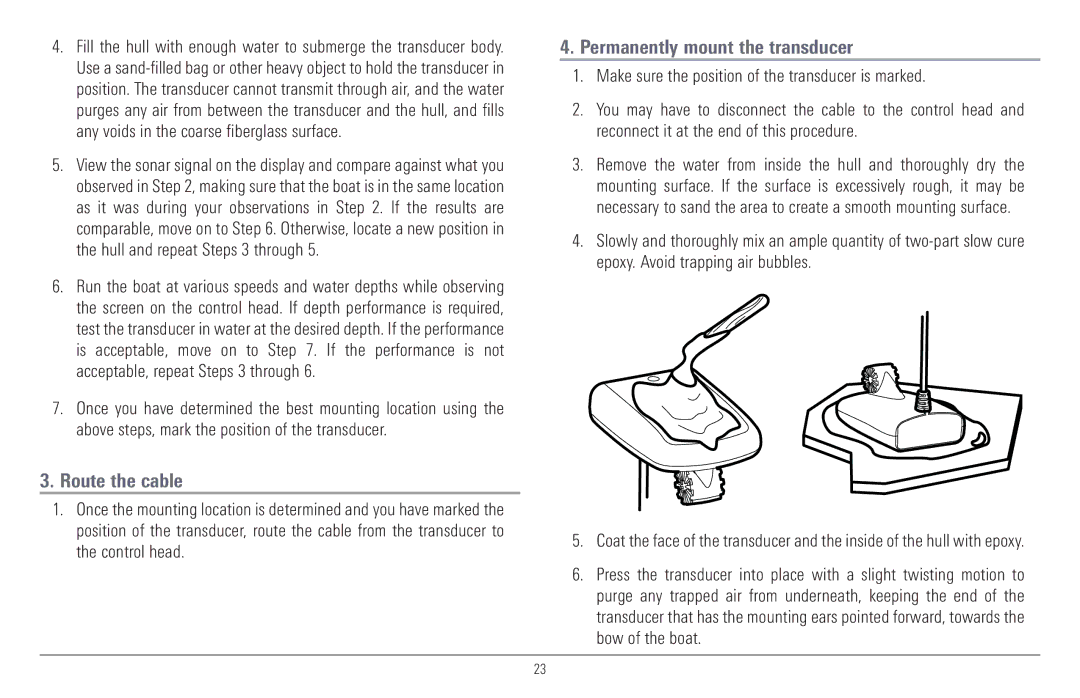
4.Fill the hull with enough water to submerge the transducer body. Use a
5.View the sonar signal on the display and compare against what you observed in Step 2, making sure that the boat is in the same location as it was during your observations in Step 2. If the results are comparable, move on to Step 6. Otherwise, locate a new position in the hull and repeat Steps 3 through 5.
6.Run the boat at various speeds and water depths while observing the screen on the control head. If depth performance is required, test the transducer in water at the desired depth. If the performance is acceptable, move on to Step 7. If the performance is not acceptable, repeat Steps 3 through 6.
7.Once you have determined the best mounting location using the above steps, mark the position of the transducer.
3.Route the cable
1.Once the mounting location is determined and you have marked the position of the transducer, route the cable from the transducer to the control head.
4.Permanently mount the transducer
1.Make sure the position of the transducer is marked.
2.You may have to disconnect the cable to the control head and reconnect it at the end of this procedure.
3.Remove the water from inside the hull and thoroughly dry the mounting surface. If the surface is excessively rough, it may be necessary to sand the area to create a smooth mounting surface.
4.Slowly and thoroughly mix an ample quantity of
5.Coat the face of the transducer and the inside of the hull with epoxy.
6.Press the transducer into place with a slight twisting motion to purge any trapped air from underneath, keeping the end of the transducer that has the mounting ears pointed forward, towards the bow of the boat.
23
